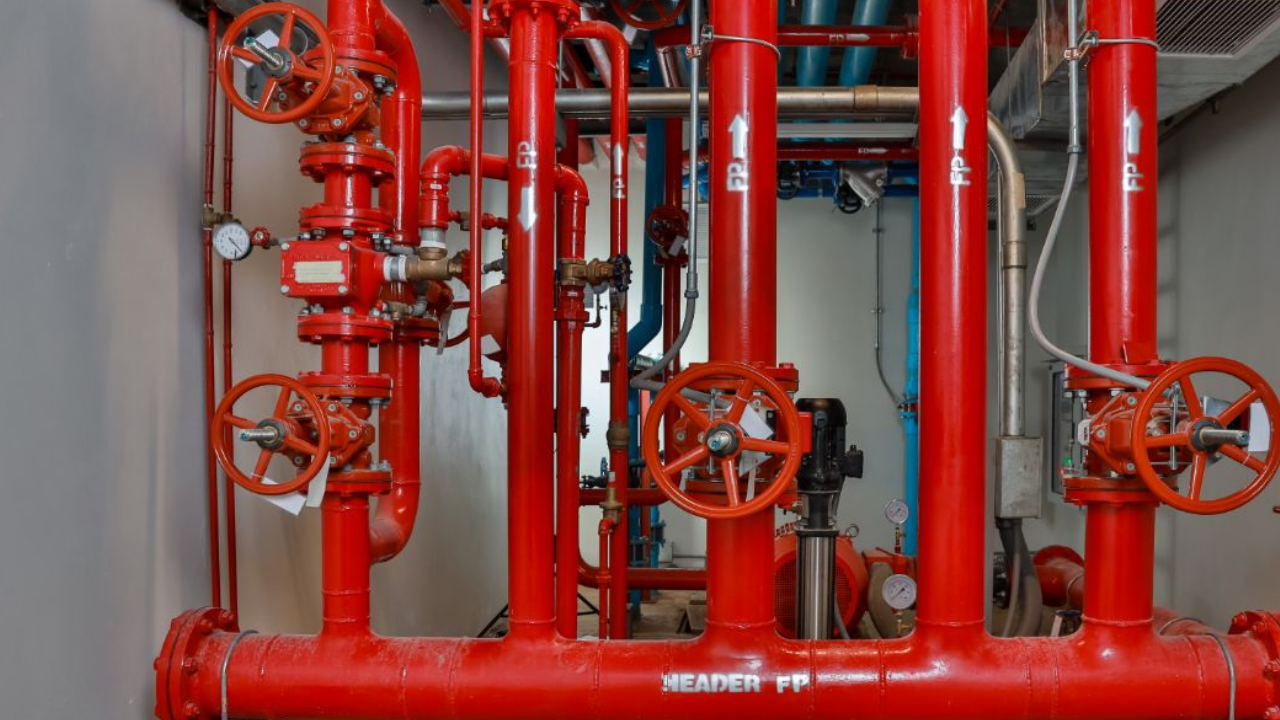Fire pipelines are made to carry liquids, such as water, that are necessary to connect firefighting apparatus. They are known as fire protection pipes and can easily be identified from other pipeline systems thanks to their bright red paint or anti-corrosion epoxy coating.
Since these pipes are usually installed permanently, we place a high priority on strict quality control to guarantee that they provide unmatched temperature endurance, corrosion resistance, and pressure resistance. Selecting our fire pipe line guarantees the longevity and safety of your firefighting systems it's more than just an investment in a product.
A Fire Pipeline System's Essential Parts
A fire pipeline system's essential parts are as follows:
Water Source:
The water source is the cornerstone of any fire pipeline system. The availability and sufficiency of water are critical to the operation of the system, regardless of whether it is connected to a municipal water supply or depends on on-site storage. While on-site storage, such as water tanks, ensures autonomy in the event of water shortages or supply interruptions, municipal supplies provide a steady supply.
Fire Hydrants:
Visible fixtures that offer easy access to water for fighting fires and fire hydrants are strategically positioned across urban and industrial regions. These fire hydrants are essential locations for firefighting hose connections, enabling quick water delivery to contain and put out flames. To guarantee their preparedness in an emergency, regular maintenance, and obvious identification are essential.
Pump Stations:
Pump stations are utilized when the natural water pressure is not enough. By increasing the pressure inside the pipeline, these stations make sure that there is enough water flowing to every component of the fire safety system. In high-rise structures or topographically difficult locations where gravity might not be able to generate the necessary pressure, pump stations are especially crucial.
Water Storage Tanks:
sed as reservoirs, water storage tanks retain a significant amount of water for use in battling fires. Aboveground or subterranean, these tanks are made to offer an additional supply of water in case of need. The size of the covered area and any potential fire threats are two criteria that affect the tank's capacity.
Network of Pipelines:
The fire pipeline system's core is the pipeline network. It is made up of a system of pipes that allows water to be moved from the source to different locations inside the protected region. To minimize reaction times during a fire emergency and to optimize water distribution and extensive coverage, the structure and construction of the pipeline network are crucial factors to take into account.
Control Valves:
Water flow is managed by strategically placing control valves along the pipeline. By controlling and directing water to particular locations, firefighters can increase the effectiveness of their firefighting efforts and avoid wasting water. Control valves must be regularly inspected and maintained to guarantee prompt and accurate operation when required.
Sprinkler Systems:
The sprinkler system is one of the fire pipeline systems' busiest parts. This system, which consists of a network of pipes with separate sprinkler heads, is intended to discharge water on its own when a predetermined temperature is attained. Sprinklers are essential for containing or putting out fires in their early stages, minimizing property damage and lowering the risk to human life.
Standpipes:
Standpipes are vertically installed within structures that are used as manual firefighting hose connection locations. These pipelines give firemen flexibility in responding to fire events by allowing them to get water at different levels within a building. To guarantee that standpipes will work in an emergency, they must be kept in good condition.
Linking Fire Departments (FDC):
Between the fire pipeline system and the firefighting apparatus utilized by emergency responders, the Fire Department Connection acts as an essential interface. An efficient and quick response to fire crises is made possible by the FDC, which is positioned for fire vehicles to easily approach and which facilitates the seamless connection of hoses directly to the fire protection system.
Last Summary
To provide a strong defense against potential fire threats, the parts of fire pipeline systems cooperate. Everything matters, starting with the water supply and going all the way to pump stations, hydrants, and sprinkler systems. This highlights the vital role that the system plays in protecting people and property: regular maintenance and a thorough understanding of these components are necessary to assure the system's readiness.


